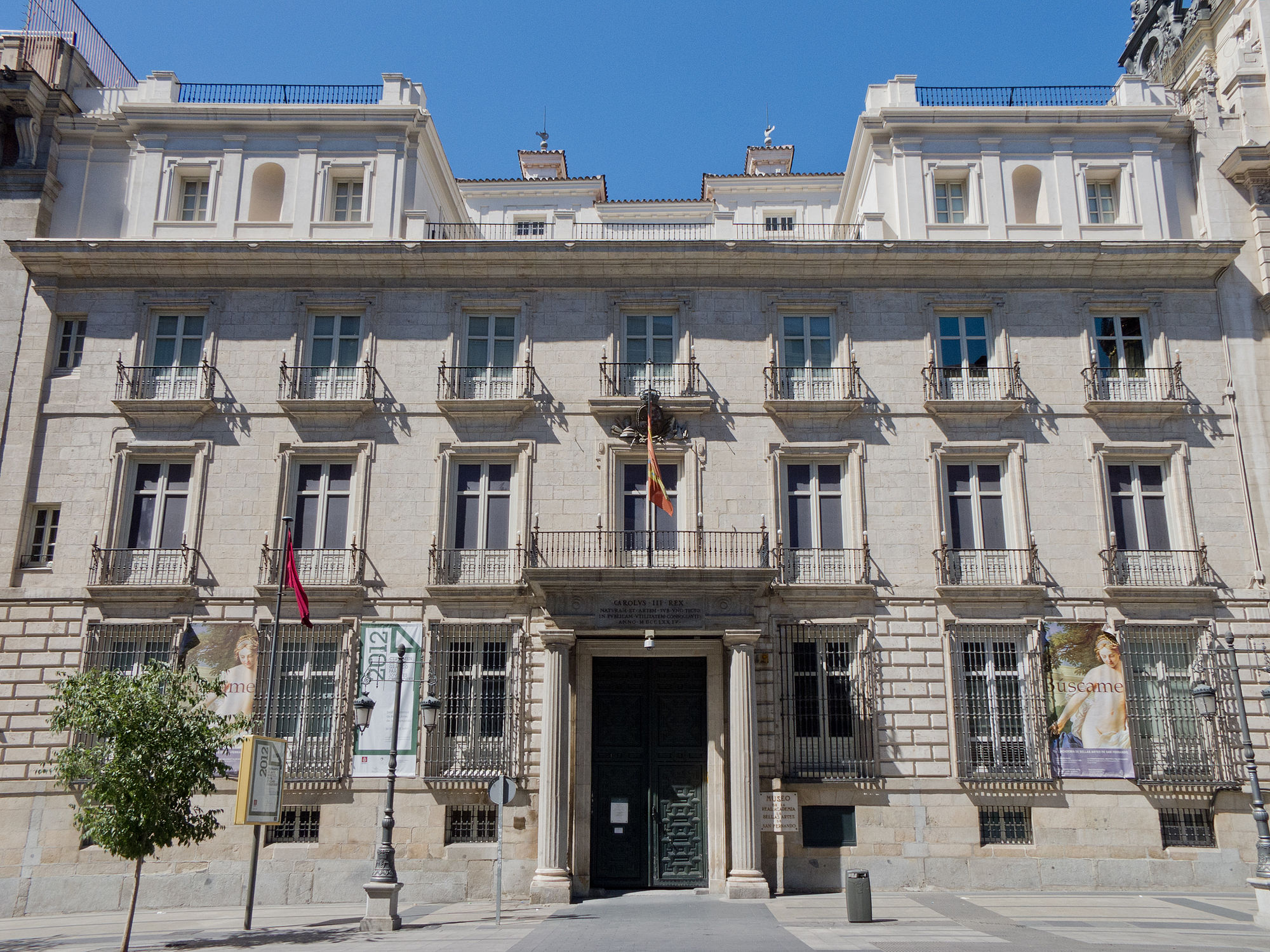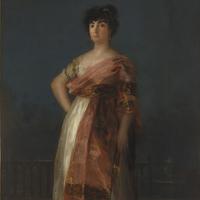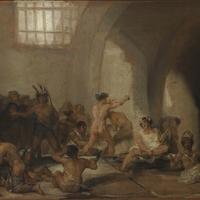More about Real Academia de Bellas Artes de San Fernando
Works at Real Academia de Bellas Artes de San Fernando

Contributor
The story of the Real Academia de Bellas Artes de San Fernando, or the Royal Academy of Fine Arts of San Fernando, may have begun with the War of Spanish Succession, in which different factions took up weapons to defend their divine right to the throne.
The eventual winner was the Duke of Anjou, grandson of Louis IV of France, who became the first Spanish Bourbon sovereign. The Alcázar palace of Madrid, built by Muslims in the second century after the advent of their faith, fell to him from the Habsburgs, who had fixed the place up again and again to keep up with the Joneses. One Christmas Eve, while Rudolph's GPS-enabled nose was leading Santa Claus over Madrid at cruising altitude, the reindeer smelled something awful: to their horror, the Alcázar, with its centuries of priceless tchotchkes that would put Antiques Roadshow to shame, was burning.
As the story goes, the French court artist Jean Ranc's apartment was a little too crammed with sumptuous treasures, and the fire started there. King Philip V, although a little mentally ill, saw that the Crown needed to create institutions to foster the arts and maintain cultural continuity in the wake of the disastrous fire. His wife, Isabella, took the wheel when he was having the most trouble, so she had a part in it also. Sometimes, as you know, mentally ill people are great artists, and great patrons, too. It was Philip who initiated the academy of fine arts, which became the Real Academia, which received its royal charter under his successor, Ferdinand VI.
The architect was Diego de Villanueva, whose father taught at the academy that preceded the building. Villanueva taught a course featuring his "treaty on the decoration and beauty of factories," which probably could have prevented Marxism from happening if it had reached a wider audience.
The Real Academia maintains over "1,400 paintings, 1,300 sculptures and 15,000 drawings, as well as prints, furniture, silverware, porcelain and other decorative arts." Its collection features artworks by the likes of Giovanni Bellini, Diego Velázquez, Giuseppe Arcimboldo, Francisco Goya, Antonio da Correggio, Giovanni Battista Tiepolo, Guido Reni, Peter-Paul Rubens, Jean-Honoré Fragonard, Anthony van Dyck, and Jacob Jordaens.
Sources
- Correa, Antonio Bonet. "Historia del museo." Real Academia de Bellas Artes de San Fernando, https://realacademiabellasartessanfernando.com/es/museo/historia.
- Correa, Antonio Bonet, et al. Real Academia de San Fernando, Madrid, Guía del Museo. Madrid: Real Academia de San Fernando, 2012.
- Gavilanes, Pedro Moleón. "Los trabajos de Diego de Villanueva." ArteHistoria, https://web.archive.org/web/20140222174555/http://www.artehistoria.jcyl….
- Gómez, Juana Vázquez. Dictionary of Mexican Rulers, 1325-1997. London: Greenwood, 1997.
- van Kessel, Elsje. The Lives of Paintings: Presence, Agency and Likeness in Venetian Art of the Sixteenth Century. Berlin: de Gruyter, 2017.
- Munoz-Basols, Javier, Manuel Delgado Morales, and Laura Lonsdale. The Routledge Companion to Iberian Studies. London: Routledge, 2017.
- Rosenberg, Pierre. Fragonard. New York: Metropolitan Museum of Art, 1988.
Featured Content
Here is what Wikipedia says about Royal Academy of Fine Arts of San Fernando
The Real Academia de Bellas Artes de San Fernando (RABASF; transl. 'Royal Academy of Fine Arts of San Fernando'), located on the Calle de Alcalá in the centre of Madrid, currently functions as a museum and gallery. A public law corporation, it is integrated together with other Spanish royal academies in the Instituto de España.
Check out the full Wikipedia article about Royal Academy of Fine Arts of San Fernando












